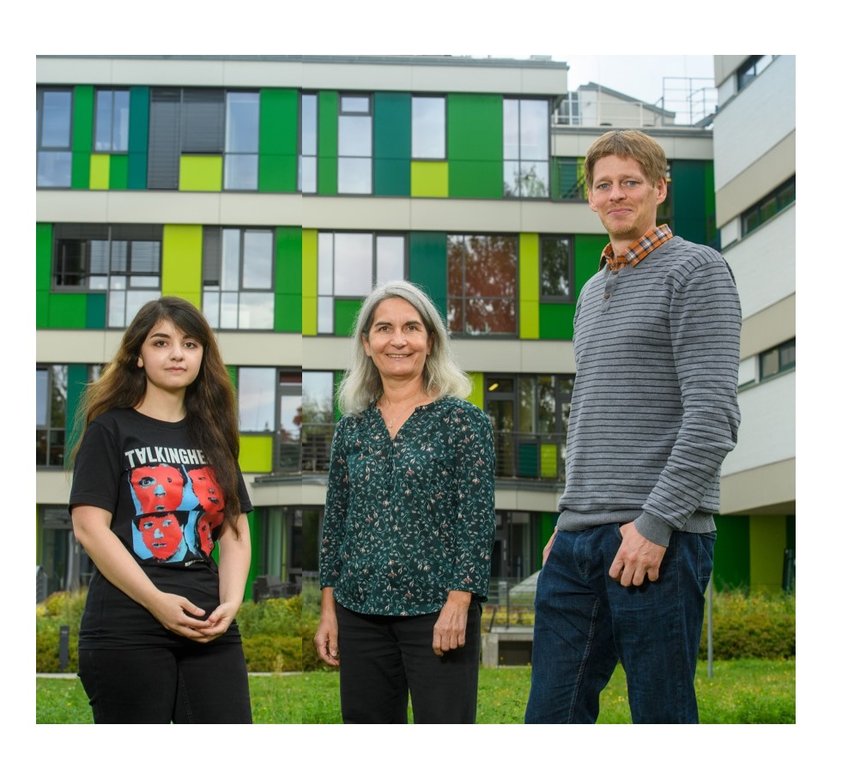
Publications of Luciana Musante
All genres
Journal Article (29)
1.
Journal Article
Genetics of intellectual disability in consanguineous families. Molecular Psychiatry 24 (7), pp. 1027 - 1039 (2019)
2.
Journal Article
Mutations of the aminoacyl-tRNA-synthetases SARS and WARS2 are implicated in the etiology of autosomal recessive intellectual disability. Human Mutations 38 (6), pp. 621 - 636 (2017)
3.
Journal Article
Klüver-Bucy syndrome associated with a recessive variant in HGSNAT in two siblings with Mucopolysaccharidosis type IIIC (Sanfilippo C). European journal of human genetics 25 (2), pp. 253 - 256 (2017)
4.
Journal Article
Missense variants in AIMP1 gene are implicated in autosomal recessive intellectual disability without neurodegeneration. European journal of human genetics 24 (3), pp. 392 - 399 (2016)
5.
Journal Article
Homozygous YME1L1 mutation causes mitochondriopathy with optic atrophy and mitochondrial network fragmentation. eLife 5, e16078 (2016)
6.
Journal Article
Mutations in the histamine N-methyltransferase gene, HNMT, are associated with nonsyndromic autosomal recessive intellectual disability. Human Molecular Genetics 24 (20), pp. 5697 - 5710 (2015)
7.
Journal Article
Redefining the MED13L syndrome. European journal of human genetics 23 (10), pp. 1308 - 1317 (2015)
8.
Journal Article
In utero gene therapy rescues microcephaly caused by Pqbp1-hypofunction in neural stem progenitor cells. Molecular Psychiatry 20 (4), pp. 459 - 471 (2015)
9.
Journal Article
Homozygous SLC6A17 mutations cause autosomal-recessive intellectual disability with progressive tremor, speech impairment, and behavioral problems. The American Journal of Human Genetics 96 (3), pp. 386 - 396 (2015)
10.
Journal Article
A defect in the CLIP1 gene (CLIP-170) can cause autosomal recessive intellectual disability. European journal of human genetics 23 (3), pp. 331 - 336 (2015)
11.
Journal Article
The Role of a Novel TRMT1 Gene Mutation and Rare GRM1 Gene Defect in Intellectual Disability in Two Azeri Families. PLoS One 10 (8), e0129631 (2015)
12.
Journal Article
Mutations in PTRH2 cause novel infantile-onset multisystem disease with intellectual disability, microcephaly, progressive ataxia, and muscle weakness. Annals of Clinical and Translational Neurology 1 (12), pp. 1024 - 1035 (2014)
13.
Journal Article
Integrated sequence analysis pipeline provides one-stop solution for identifying disease-causing mutations. Human Mutation 35 (12), pp. 1427 - 1435 (2014)
14.
Journal Article
NDST1 missense mutations in autosomal recessive intellectual disability. American Journal of Medical Genetics Part A 164A (11), pp. 2753 - 2763 (2014)
15.
Journal Article
Previously reported new type of autosomal recessive primary microcephaly is caused by compound heterozygous ASPM gene mutations. Cell Cycle 13 (10), pp. 1650 - 1651 (2014)
16.
Journal Article
Genetics of recessive cognitive disorders. Trends in Genetics 30 (1), pp. 32 - 39 (2014)
17.
Journal Article
A novel ALDH5A1 mutation is associated with succinic semialdehyde dehydrogenase deficiency and severe intellectual disability in an Iranian family. American Journal of Medical Genetics Part A 161A (8), pp. 1915 - 1922 (2013)
18.
Journal Article
De novo truncating mutations in ASXL3 are associated with a novel clinical phenotype with similarities to Bohring-Opitz syndrome. Genome Medicine 5 (2), p. 5:11 - 5:11 (2013)
19.
Journal Article
Hybridisation-based resequencing of 17 X-linked intellectual disability genes in 135 patients reveals novel mutations in ATRX, SLC6A8 and PQBP1. Eur J Hum Genet 19 (6), pp. 717 - 20 (2011)
20.
Journal Article
The X-chromosome-linked intellectual disability protein PQBP1 is a component of neuronal RNA granules and regulates the appearance of stress granules. Hum Mol Genet 20 (24), pp. 4916 - 31 (2011)